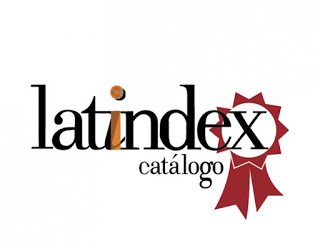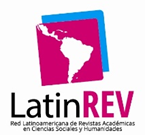Aspects that Employers Value when Hiring a Graduate of Higher Education
Abstract
One of the purposes of universities, together with scientific, technical and cultural development, is to train the professionals that society requires. The aim of this study was to identify the aspects that employers value when hiring a graduate of Higher Education. For this, semi-structured interviews were conducted with the heads of the human resources departments of three companies located in Baja California, Mexico. The interview asked questions about the characteristics or their workforce (recruitment and selection process, desirable traits in their future professional co-workers, reasons why they hire or reject a candidate, among others), and the employers’ opinion of Higher Education Institutions (HEIs) as trainers of human capital. The study found that in the employers’ opinion, the attitude shown by graduates of HEIs in the interview is as important as technical knowledge; they also point out that the proactive attitude was a weakness in the candidates, as well as oral and written communication skills, particularly in English. Furthermore, there was no strong opinion regarding the educational quality of HEIs, but they highlight the benefits of a closer relationship between companies and universities, with the aim of achieving a balance between labor supply and demand.
KEYWORDS. Higher education; graduates; competencies; employability; labor market.
Doi: 10.21703/rexe.20191837acosta5
Downloads
References
Almanza, R., & Vargas, J. (2015). Propuesta teórico metodológico para el análisis de las competencias profesionales y su impacto en la empleabilidad. Revista Gestão Universitária na América Latina - GUAL, 8(1), 110-131. Doi: http://dx.doi.org/10.5007/1983-535.2015v8n1p110.
Banamex (2016). Indicadores Regionales de Actividad Económica. Estudios económicos. Retrieved from http://fec-Chiapas.com.mx/sistema/noticias_files/iraes_2016.pdf.
Becker, G. S. (1964). Human capital: A theoretical and empirical analysis, with special reference to education. Chicago: University of Chicago Press.
Cai, Y. (2013). Graduate employability: a conceptual framework for understanding employers’ perceptions. Higuer Education, 65(4), 457-469. Retrieved from https://link.springer.com/article/ 10.1007/s10734-012-9556-x.
Castro, A. (2004). Las competencias profesionales del psicólogo y las necesidades de perfiles profesionales en los diferentes ámbitos laborales. Interdisciplinaria, 21(2), 117-152. Retrieved from http://www.scielo.org.ar/scielo.php?script=sci_arttext&pid=S1668-70272004000200001.
Corica, A. (2012). Las expectativas sobre el futuro educativo y laboral de jóvenes de la escuela secundaria: entre lo posible y lo deseable. Última década, 20(36), 71-95. Doi: https://dx.doi. org/10.4067/S0718-22362012000100004.
Cotton, K. (2001). Developing Employability Skills. Portland, OR: Northwest Regional Educational Research Laboratory. Retrieved from https://educationnorthwest.org/sites/default/files/DevelopingEmployabilitySkills.pdf.
Crespo, S., Cuamatzi, M., & González, M. (noviembre, 2009). Opinión de los empleadores sobre el perfil del licenciado en enfermería de la Facultad de Estudios Superiores Zaragoza. Paper presented at X Congreso Nacional de Investigación Educativa (COMIE), 1-10. Conference held in Veracruz, Mexico. Retrieved from http://www.comie.org.mx/congreso/memoriaelectronica/v10/pdf/carteles/0182-F.pdf.
Damián, J. Montes, E., & Arellano, Ll. (2010). Los estudios de opinión de empleadores. Estrategia para elevar la calidad de la educación superior no universitaria. RINACE, 8(3), 180-203. Retrieved from http://www.rinace.net/reice/numeros/arts/vol8num3/art11.pdf
Estrella, G., & Ponce León, M. (2006). Impacto Laboral de egresados universitarios y opinión de empleadores. México: UABC. Retrieved from http://www.uabc.mx/planeacion/reportesdeestudios2004/reporteempleadores.pdf.
Garrido-Trejo, C. (2011). Funcionalidad técnica de la educación y demanda de profesionales. Zona metropolitana de Toluca, 1995-2005. Convergencia Revista de Ciencias Sociales, 0(55), 69-85. Retrieved from http://convergencia.uaemex.mx/article/view/1131/1700.
González, L. (1993). Nuevas relaciones entre educación, trabajo y empleo en la década de los 90. Revista Iberoamericana de la Educación, 2. Retrieved from http://rieoei.org/oeivirt/rie02a03.htm.
Institute of Statistics and Geography (INEGI). (2018a). Encuesta Nacional de Empleo. Población ocupada. Retrieved from http://www.inegi.org.mx/Sistemas/Olap/Proyectos/bd/encuestas/hogares/enoe/2010_PE_ED15/po.asp?=est&proy=enoe_pe_ed15_po&p=enoe_pe_ed15.
Institute of Statistics and Geography (INEGI). (2018b). Encuesta Nacional de Empleo. Población desocupada. Retrieved from http://www.inegi.org.mx/Sistemas/Olap/Proyectos/bd/encuestas/hogares/enoe/2010_PE_ED15/pda.asp?s=est&proy=enoe_pe_ed15_pda&p=enoe_pe_ed15.
Knight, P., & Yorke, M. (2001). Employ ability through the curriculum. Skills Plus Project Report.
Márquez, A. (2011). La relación entre educación superior y mercado de trabajo en México. Una breve contextualización. Perfiles Educativos, 33, 169-185. Retrieved from http://www.ses.unam.mx/integrantes/uploadfile/amarquez/AMJ2011_LaRelacionEntreESyMercado.pdf.
Mincer, J. (1958). Investment in human capital and personal income distribution. Journal of Political Economy, 66(4), 281-302. Retrieved from https://www.jstor.org/stable/1827422?seq-=1#page_scan_tab_contents.
Mora, M., & Oliveira, O. (2012). Las vicisitudes de la inclusión laboral en los albores del s XXI: trayectorias ocupacionales y desigualdades sociales entre jóvenes profesionistas mexicanos. Estudios Sociológicos de El Colegio de México, 34(102), 3-42. Retrieved from http://estudiossociologicos.colmex.mx/index.php/es/article/view/157/157.
Official Gazette of the Federation (DOF) (2013). Plan Nacional de Desarrollo 2013-2018. Retrieved fromhttp://www.dof.gob.mx/nota_detalle.php?codigo=5299465&fecha=20/05/2013&print=true).
Organization for Economic Co-operation and Development (OECD). (2003). Education at a glance. Paris: Author. Retrieved from http://www.oecd.org/education/skills-beyond-school/educationataglance2003-home.htm.
Organization for Economic Co-operation and Development (OECD). (2017). Diagnóstico de la OCDE sobre la Estrategia de Competencias, Destrezas y Habilidades de México. Resumen Ejecutivo. Paris: Author. Retrieved from http://www.oecd.org/mexico/presentacion-del-diagnostico-de-la-estrategia-de-competencias-destrezas-y-habilidades-de-la-ocde-para-mexico.htm.
Organization for Economic Co-operation and Development (OECD). (2019). Educación Superior en México. Resultados y relevancia para el mercado laboral. Paris: Author. Retrieved from www.oecd.org/centrodemexico/medios/educacion_superior_en_mexico.pdf.
Oroval, E., & Escadibul, O. (1998). Economía de la educación. Madrid: Encuentro Ediciones. Pineda, P. (2001). Economía de la educación: una disciplina pedagógica en pleno desarrollo. Teoría de la Educación, 12(14), 143-158. Retrieved from https://gredos.usal.es/jspui/bitstream/10366/71891/1/Economia_de_la_Educacion_una_disciplina_.pdf.
Ramlia, A., Nawawia, R., & Poh Pau Chun, M. (2010). Employees’ Perception of Employability Skills Needed in Todays Workforce among Physiotherapy Graduates. Procedia, Social and Behavioral Sciences, 7, 455-463. Doi: https://doi.org/10.1016/j.sbspro.2010.10.062.
Santibáñez, R. J., & Cruz P. R. (2000). Mercados laborales fronterizos. Migración México-Estados Unidos, Opciones de política. México: SEGOB/CONAPO/SER. Retrieved from http://www.conapo.gob.mx/work/models/CONAPO/migracion_internacional/MigracionOpPolitica/04.
pdf.
Schultz, T. (1961). Investment in human capital. Chicago: University of Chicago Press.
State Education System (SEE). (2018). Principales cifras estadísticas. Anuario de datos e indicadores Educativos ciclo 2017-2018. Retrieved from http://www.educacionbc.edu.mx/publicaciones/estadisticas/2018/publicaciones/Cuadernillo%202017-2018.pdf.
State Government (2016). Diagnóstico estratégico. Plan estatal de desarrollo. Retrieved from http://www.bajacalifornia.gob.mx/portal/gobierno/ped/doctos/diagnostico_estrategico.pdf.
Tarrés, M. L. (2008). Observar, escuchar y comprender. Sobre la tradición cualitativa en la investigación social. México: COLMEX/FLACSO.
Vargas, Z. F. (septiembre-octubre 1998). Formación profesional en América Latina. Buenas perspectivas, varios desafíos. Seminario sobre Formación Profesional y Empleo. Encuentro Iberoamericano de responsables de la formación profesional, 5-15. Ciudad de México, México. Retrieved from http://www.oei.org.co/iberfob/méxico.
Velde, C. (2009). Emploers´ perceptions of graduate competencies and future trends in higuer vocational education in China. Philadelphia: Routledge.





